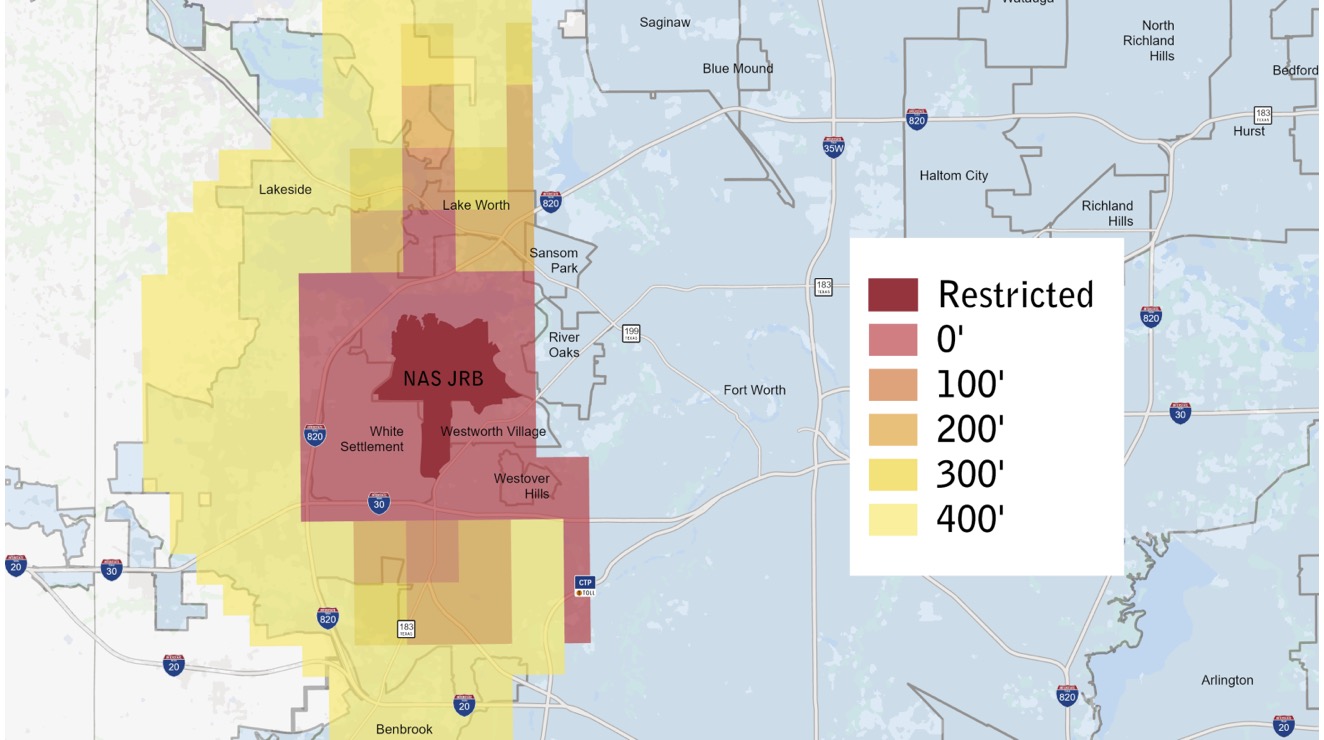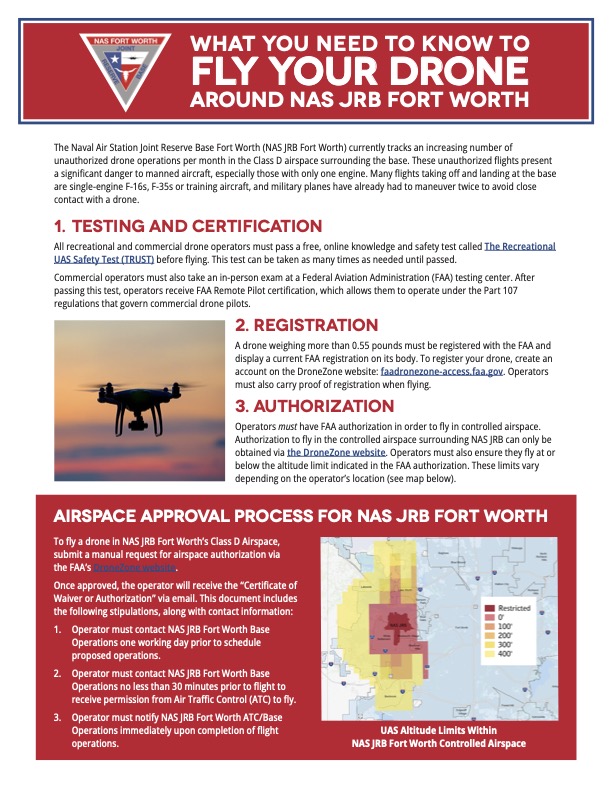
Verifying that intended flights will unfold in authorized airspaces should top the checklist of both leisure and professional drone pilots before they take to the skies – a normally routine precaution that an alarmingly high number of operators near the Naval Air Station Joint Reserve Base Fort Worth in Texas are clearly ignoring.
To offer an idea of just how widespread the insouciance – if not legally punishable negligence – of drone enthusiasts around the Fort Worth military air facility is, officials say the monthly sightings of unauthorized drones have risen from 100 in recent years to a current 300. That would be bad enough in the prohibited airspace of an Air Force base for jet fighter pilot training and practice were that the extent of it.
But according to the installation’s commanding officer, Captain Mark McLean, during several months fighter pilots have reported up to 700 drone sightings in the restricted airspace – two of which forced jets to undertake evasive maneuvers to avoid collisions.
The doubtless rattled navigators of those speeding craft presumably took little comfort in the prevailing view that the dangerous UAV incursions are the work of naïve, indeed clueless operators.
“We do not for any reason believe that there is hostile intent in flying a drone within our airspace,” McLean told Fort Worth NBC affiliate KXAS in its report detailing the troubling activity. “The majority of the ones we’re seeing are just the younger crowd that’s owning and operating these that don’t know any better.”
Oh well, no problem then.
What?
McClean himself notes the base conducts between 15 and 20 jet training flights each day. While that high rotation could possibly explain the huge number of drone sightings – with several fighters perhaps reporting the same unauthorized drone present in the same time frame – it still in no way diminishes the enormous perils (or elevated numbers) those airspace violations pose. Meanwhile, since when has being an ignoramus worked as a mitigating excuse?
Indeed, despite his morons-will-be-morons explanation of the illicit drone flights around the station, McClean makes no bones about the damage a collision with a UAV would likely cause. By way of comparison, he cites a 2021 jet crash caused by a 4.5-pound buzzard flying into the plane’s intake vent, ending up with three local houses being damaged.
“(Y)ou can parallel those two potential scenarios and understand that a drone in a single-engine fighter aircraft can put not only the pilot in harm’s way but the public that resides in that airspace,” McClean said, adding officials are now taking steps to rid the skies of drones around the facility of drones.
First, base and local authorities have upped communication efforts to reach and educate the public (and uniformed drone pilots in it) about restrictions around the area. As part of that, they provide reminders of the regulator-approved airspace mapping apps that should be checked before starting any flight.
Meanwhile, the Naval Air Station’s air traffic controllers and pilots are immediately informing one another about new drone sightings in the prohibited zone, permitting pilots to avoid invasive UAV spots. That location information will now also be transmitted to other agencies so Fort Worth police can hunt errant operators down.
“We’ll work with our federal law enforcement here on the base – that’s NCIS,” McClean said. “NCIS will work with local law enforcement to go seek out where that operator is.”

FTC: We use income earning auto affiliate links. More.



Comments